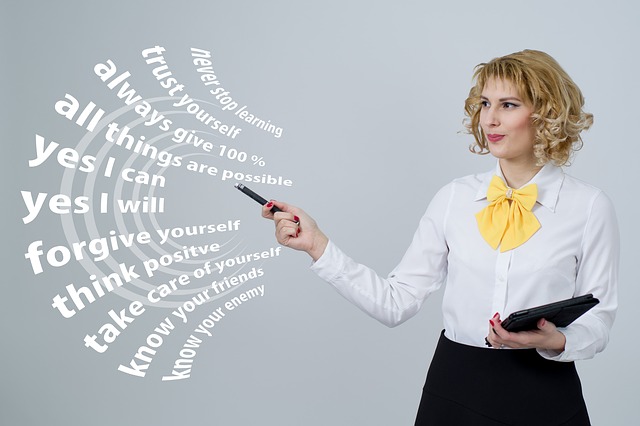Being a Solar CEO: What It’s Taught Me About Workplace Energy

The following post was written and provided by Scott Cramer of Go Solar Group. Go Solar Group is a family-owned, full-service solar company that was founded in Utah after a service mission in Africa, which included experiencing the benefits of installing solar products for orphanages in off-grid communities and providing an additional 3 million hours of study time for Ugandan schoolchildren since its creation.
As a solar company CEO, I’ve learned many unexpected lessons about a form of energy seemingly different yet related to solar energy – energy in the workplace. Workplace energy is as powerful as any energy, perhaps more so.
I know how to manage people’s electricity usage within the walls of their homes, helping them reduce power bills and establish energy independence. But that’s just the beginning of the technical jargon to which I’ve grown accustomed: I know conduits, alternating currents, direct currents, PV, kilowatt hours, and transduction like the back of my hand. I could probably teach and certify electricians if I wanted to.
However, nowhere in the bucket of solar and electricity knowledge I’ve acquired over the years can I find solar energy lessons more important than the ones I’ve learned about human energy while working as a CEO.
Am I a shaman or spiritual guru? No, not by any stretch of the imagination. However, I value performance and have spent years testing and revising my lifestyle to see which conditions best set the stage for success and happiness in my life as a very busy executive at a growing company.
I’ve battle-tested the following 5 tidbits on positive energy in helping me raise four small children, maintain a happy marriage, and lead a business to year-over-year growth in existing and new markets. I believe these lessons on human energy can be useful to anybody earning an income, but particularly for executives and business owners.
So, without further ado, here are 5 lessons on human energy I’ve learned as a CEO that will help entrepreneurs and executives manage their time more effectively, lead happier lives, and inspire their employees to push themselves to new heights.
Live Inside Out, Not Outside In
If you put money front and center, nobody will buy-in to your purpose enough to give you their hard-earned dollars.
The inmost purpose of your company, no matter what industry its in, should not contain a monetary objective.
Even if you manage a large hedge fund on Wall Street, you are not trying to make people money. You’re trying to give them the feeling having more money will give them. The feeling the customer, in general, is more important than the outcome of the business objective.
If you tend to your customer, prospect, or yourself as someone who needs to consume something from the outside world, the resulting feeling will be that of a person being a mere means to an end.
And who wants to feel that way?

Executives who are passionate about what they do, not the outcomes of their labor per se, tend to be happier and more successful. If your organization’s mission is to improve the lives of others with your product(s), you will perform better than any executive hell-bent on merely selling more product(s).
Brands that sell products and have the live inside out mantra handled make better brand extensions and adapt more quickly to changing markets, because they see beyond the product to the benefits the product gives to its people.
Take Richard Branson, Elon Musk, or Steve Jobs, for example. Do you think any of these three men accomplished what they did because they just wanted to make money?
They live their purposes inside out, and everything else falls into place, always returning to the purpose that made them visionaries to guide the brand and its product development when things get difficult, markets change, or downfalls occur.
The purpose of their brands not only set the positive energy of each company in motion, but awakened potential customers to each brand’s virtuosic ability to improve lives, one product and brand extension at a time.
Abiding by a purpose will also simplify your moral code, making it clear what you should do when difficult decisions must be made, helping you sidestep what CEOs call decision fatigue.
Purpose comes from within. Money comes from out there. Live inside out with purpose front and center, and the money will come. If you put money front and center, nobody will buy in to your purpose enough to give you theirs.
Understand Mind and Body as One
Rene Descartes, the French Philosopher who famously coined the expression “I think therefore I am,” is also famous for beginning a discourse of research that would culminate in our contemporary understanding of the mind and body’s interrelatedness.
Descartes had a hypothesis that the mind and body operate as a unit more than they do independently of each other, and technology later proved he was right in his assumption.
When researchers configure an EEG to the heads of world class sprinters and ask the runners to envision themselves setting a world record for the race in which they specialize, researchers found that the muscles in the athletes’ legs and arms fired at the same rate they would have to to actually run at a world record pace, all while the athletes sat completely still.

The mind is the most powerful instrument at your disposal when it comes to cultivating the right energy.
Executives can take the power of visualization and apply it to any objective they see fit, whether it means increasing sales or nailing out the kinks in a budget. If executives harness their mental energy correctly and ruminate on positive outcomes, they will be able to find solutions that lead to the desired outcome more easily.
One can’t expect to be on top of his or her mental game if the body’s physical needs are neglected: Exercise, adequate sleep, and eating healthily. And, if all you do is polish your physique and your diet, your mind won’t operate at its maximum capacity.
Balance is key in the principle of leveraging the mind’s and body’s conjunctive power.
Bad Vibes Are Real, and they Can’t Be Hidden or Swept Under the Rug
Any and all advice that tells you to alter your appearance, stance, posture, or attire is as hollow as an empty gesture.
Yes, I regret to inform you your GQ subscription is only a very small piece of the puzzle when it comes to feeling and looking powerful.
No matter what power pose you strike or power suit you put on in the morning, attire won’t determine whether you communicate a message of power or influence to your employees. The way you feel about yourself at your core, however, will.
That’s why a sense of self-efficacy is so important, and why the adage ‘fake it ‘til you make it’ makes nothing more than a noticeable charade of your insecurities, of which your office compadres will be keenly aware. These further fuels a cycle of bad energy and underperforming leadership.

While power poses and nice business casual attire may make you feel more confident and capable, the dependent variable far more important and worth measuring/improving upon is how you feel about yourself at your core.
Changing the way you feel about yourself may seem like it takes more work than buying a suit, because it does. However, finding that positive sense of self isn’t as complicated as many self-help scholars and therapists would like us to believe it is. Tally your victories, focus on what you have to be grateful for, and ruminate on what good fortune the future will bring.
To get rid of bad vibes and capitalize on your positive energy, you need to change your feelings. The easiest way to change your feelings is to prioritize the positive things in your life as most deserving of your attention.
Once you make this subtle shift in awareness, your positive energy and sense of gratitude will grow, and you will attract more positive energy and success in your life.
Cut Your Workweek to a 50-Hour Max to Activate Remote Modes of Thought
Believe me, the ‘take it easy’ mantra annoys me just as much as it annoys any other executive, so rest assured that’s not what this section is about.
There is a silver lining between that platitude and working your mind into an ineffective frenzy, thought, and it’s best illustrated by the diffuse mode of thinking, which occurs when our minds solve problems in ‘the background’ while we concentrate on something else.
Barbara Oakley, Ph.D. describes the diffuse mode and focused mode in her landmark book on problem solving, “A Mind for Numbers.”
Most decisions executives make in their workweeks hinge on number-driven decision making and understanding big data, making the principles Oakley outlines in this book highly relevant to executives in any industry.
The diffuse mode of thought, as it’s identified by Oakley, occurs when we are relaxing or letting our minds wander. If you have ever arrived at the solution to a problem while in the shower or when you wake up, it’s likely the diffuse mode of thought that gave you the solution to the problem.
The lesson is to give your mind enough time to work in focused mode without sacrificing its capacity for operating in the diffuse mode, meaning a 50-hour workweek cut off to strike the right balance.

In stark contrast, workplace productivity and efficiency expert, Brian Tracy, tells us top executives work 59 hours per week, and that developing a workaholic mentality is a positive thing that will generate greater results for us at the office. The idea is so incredibly simple that even a kindergartener can understand and replicate it.
The thing Brian Tracy forgets to point out at the forefront of his talks on this subject is that you should not develop a workaholic mentality and exercise it continuously. Rather, it should be developed and exercised continually. Continually meaning intermittently and as needed, Continuously meaning without interruption or aberration.
If you have several months where rote, simple tasks need to be hammered out, then go ahead and work the 60-hour workweek for a few months.
However, if the problems you need to solve require high order thinking and an interdisciplinary blend of creativity and mathematical reasoning, be sure to get your rest as needed to activate the energy your diffuse mode brain needs to solve complex problems.
Caring Energy: The Best Marketing and Sales Strategy
Does your sales team have a caring energy or a pushy energy? Is there a sense of desperation to sell more or a caring urgency to improve others’ lives with the product or service offered?
It’s very difficult to teach someone how to care, so the best strategy to make sure your customers and prospects receive the right energy from your team is to hire people who are emotionally invested in your cause and care about it beyond the scope of their own monetary gain.
You may be thinking Okay, easier said than done. How do I get a team of twenty somethings in my call center to care?
There are a number of books you can read to answer that question, all of which describe how the right energy can be applied to generate the best results and motivate your team to care. These are my go-tos for motivating teams and establishing the right energy:
- Influence – The Psychology of Persuasion by Bob Cialdini Ph.D.
- How to Win Friends and Influence People by Dale Carnegie
- Start with Why by Simon Sinek

Customers and prospects alike can feel whether salespeople are trying to sell them or advise them, and, ironically, the latter of these two methods will increase sales.
Again, in reference to point #3, a ‘you’re trying to sell me’ vibe is a very real thing, and it deters customers from buying products very quickly if there’s still legwork needed to convince the prospect.
Our best sales rep is passionate about selling solar to improve the environment, give homeowners energy independence, and save prospects from utility companies’ electrical rate hikes. He isn’t in it for the money. He’s in it for the purpose (see point #5).
He also has solar on his own home. His belief in the product and how it can truly help other people is the biggest determinant of his success, which has made him one of the most decorated solar consultants in the Inter-mountain West.
Bringing All the Right Energy Together
All of the points I’ve made above can be distilled into two categories – having the right mindset and tuning the environment you operate in for success.
Remember, the environment you create is about so much more than your to do list. It’s about the vibes you give off to others, and the ones you apply to yourself as well.
As long as you apply these principles, you’ll be harnessing the power of human energy in a way that will benefit you tremendously, says me, the guy who’s learned a thing or two about energy in general throughout the course of his career as a solar company CEO.
This guest post was authored by Scott Cramer

Scott Cramer is CEO of Go Solar Group – a solar quote provider and installer based in Utah and Reno, Nevada. Green Business has always been a part of Scott’s life. At the age of 11, Scott started a curbside recycling business. After graduating from university, Scott started an energy consulting firm designed to save business owners money and help the environment. Scott has immersed himself in solar since 2009 when he first saw the effect it could have on the lives of others.
.
Image credits.
Mind.

